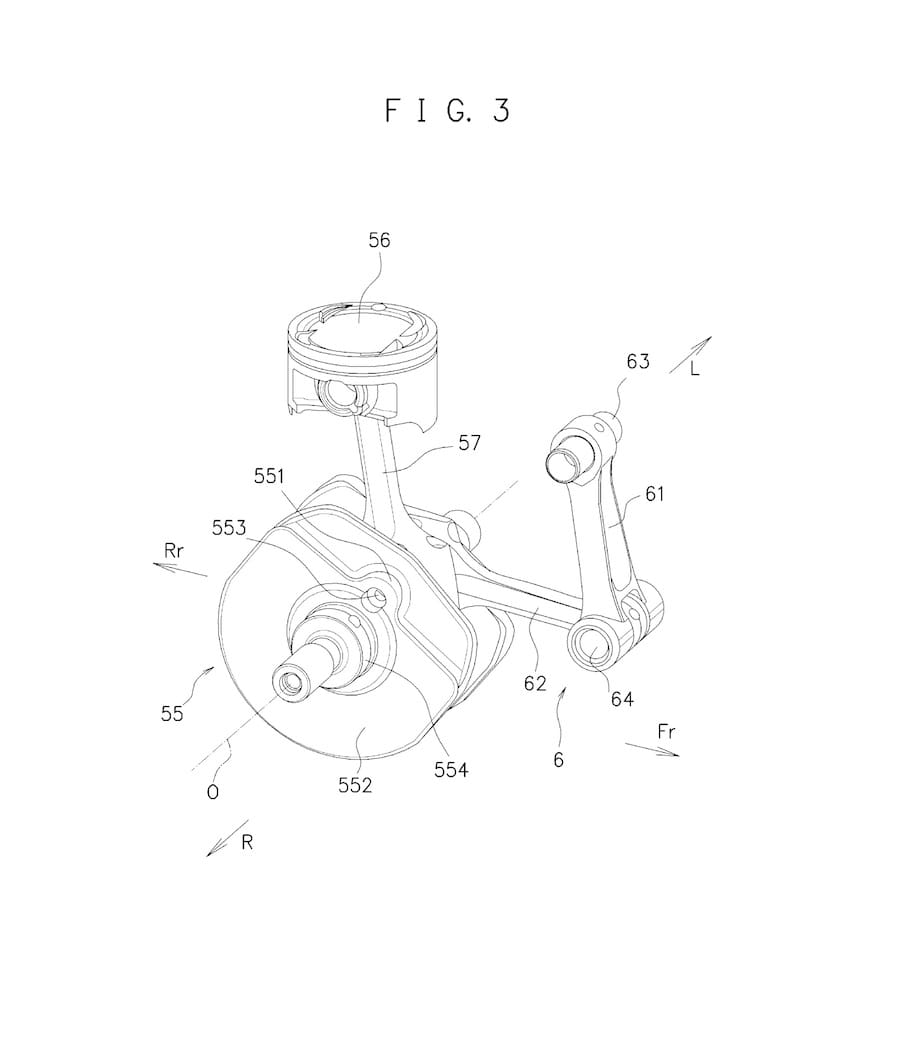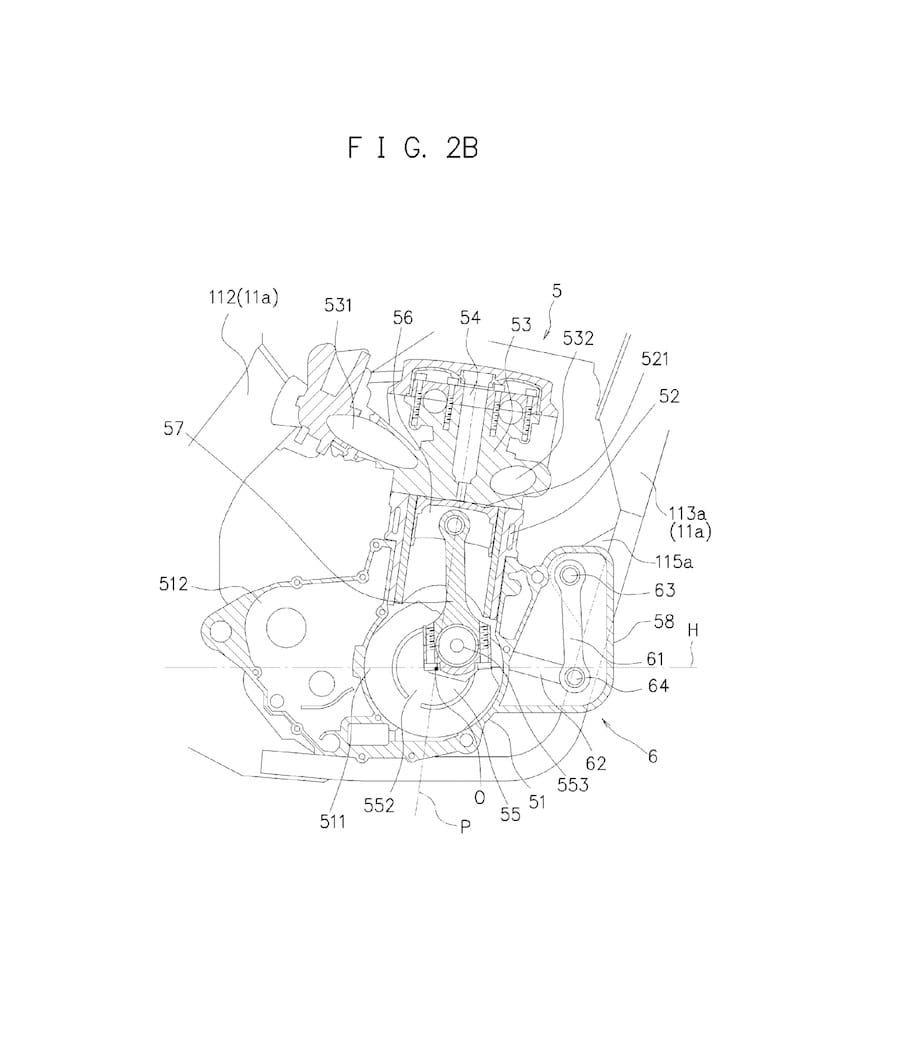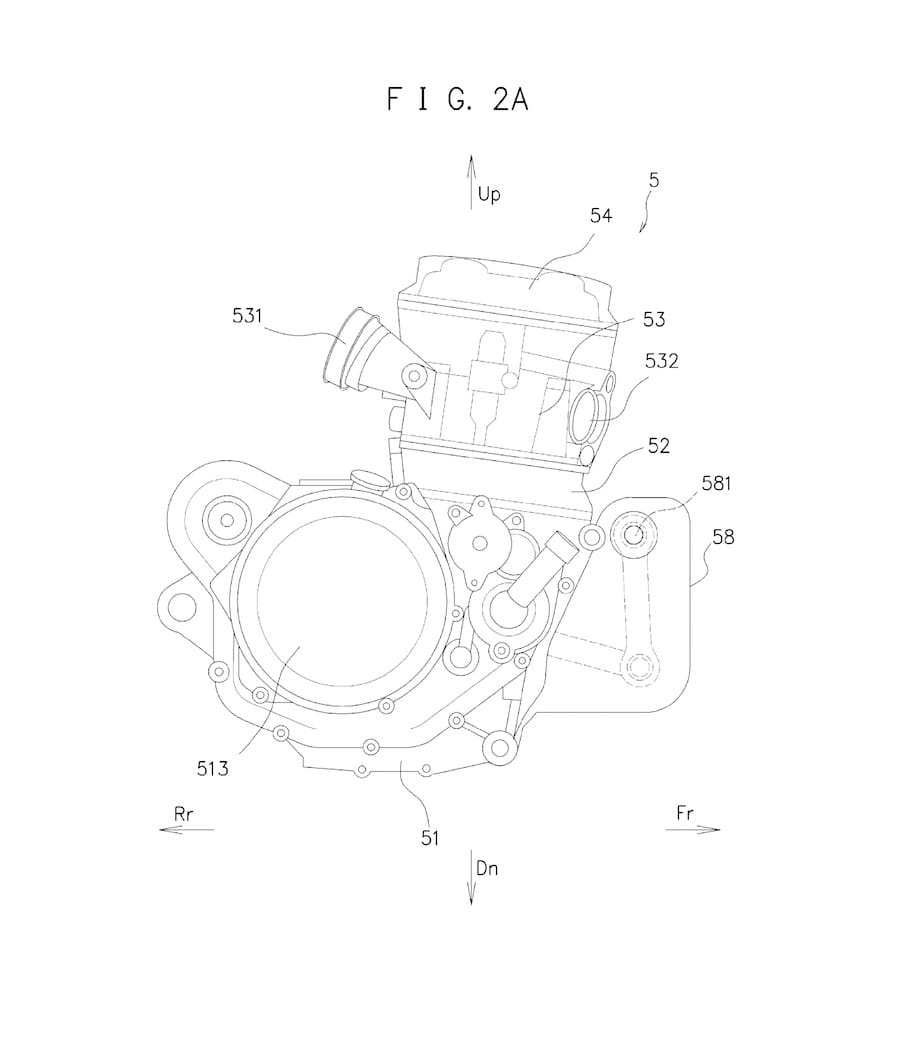Unlike on the original design, Suzuki’s engine is fitted to a motocross bike, although the patent suggests the engine may appear in other models, including, perhaps a replacement for the DR650.
What sets it apart – and mimics the Ducati Supermono – is the engine’s balancer system. Balancer shafts are a familiar idea but they normally have offset weights on a spinning shaft to counteract engine vibrations. As well as making for a smoother ride, they reduce stresses and can allow engines to rev higher, increasing power.
The Suzuki system, like the Supermono nearly 25 years ago, does away with the balancer shaft and instead adds a second conrod to the engine. It goes into a foreshortened dummy cylinder at 90o to the actual cylinder, and connects to a weighted arm on a pivot. The result is a moving mass that simulates the balanced forces of a 90o V-twin engine.
On the Supermono, the system emerged because the engine used was literally a 90o Ducati V-twin with one cylinder sliced off. It was patented back in 1994 by Massimo Bordi, which means Suzuki’s efforts to get a new patent on the idea might be stymied unless it can show that its system is notably different. However, since patents generally last for only 20 years, Ducati isn’t likely to have a hold over the idea any longer, leaving the way open for Suzuki to use the technology.















